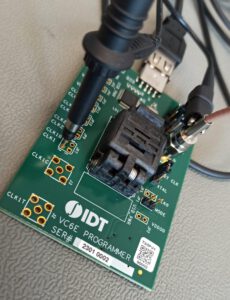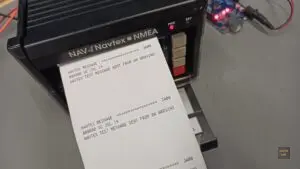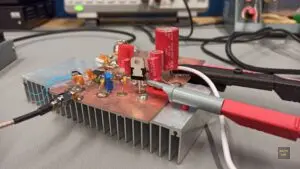Amateur Radio
Universal Clock Translator using Renesas VersaClock 6E Devices

Due to the popularity of the QO-100 geostationary amateur radio communication satellite, precision GPS reference frequency sources (GPSDO) are becoming more and more common in home labs. The desire to derive different, fixed frequency signals from a GPSDO has similarly been increasing as different devices requiere different reference clocks with different frequencies. Therefore, this article is taking a closer look at the VersaClock 6E devices from Renesas.
JFET-based infinite impedance detector for AM-demodulation

The so-called “infinite impedance detector” is a circuit that was commonly used in the old days of vacuum tubes. Since vacuum tubes can be somewhat considered to be heated JFETs, it is evident that such a circuit can also be built using a more modern, silicon-based approach. This article covers my first experiments with a BF256B based infinite impedance detector.
SITOR-B / NAVTEX Test Signal Generation

This article shows how to generate valid NAVTEX message bitstream using an Arduino. The Arduino implements proper CCIR476 character encoding, SITOR-B forward error correction, synchronization and phasing signals. An entry-level function generator is then used as a FSK modulator on 518 kHz where it can be received by a NAVTEX receiver.
VHF LDMOS Power Amplifier Experiments

The NXP MRF101 series high ruggedness N-channel Enhancement-mode lateral MOSFETs promise over 100 Watt CW output power and slightly over 20 dB gain from 1.8 MHz all the way up to 250 MHz. Their mismatch insensitivity for a VSWR of greater than 65:1 without significant device degradation makes these devices extremely interesting for amateur radio operators. While there a plenty of designs for the HF + 6m Bands on the internet, I wanted to see what it takes to use them on the 2m VHF band.
ICS501 / ICS501 VHF Experiments

The ICS501 / ICS511 from Renesas are easy to use, fully integrated clock multipliers for output frequencies up to 200 MHz. What makes them particuarly interesting is the integrated crystal oscillator circuit and ability to produce some fractional multiples, such as 6.25 or 2.5. So let’s find out if they’re interesting for the hobbyist who wants to generate clock signals in the VHF range.
Lumped-Element Wilkinson Splitter / Combiner Design

This article will show how to design a 2-way equal split lumped-element Wilkinson power divider with 50 Ω impedance for 28 MHz. Lots of big words; reread just to make sure you read it correctly and you don’t have to read through this article just to realize it’s not what you need. The Wilkinson works both as splitter and combiner.

